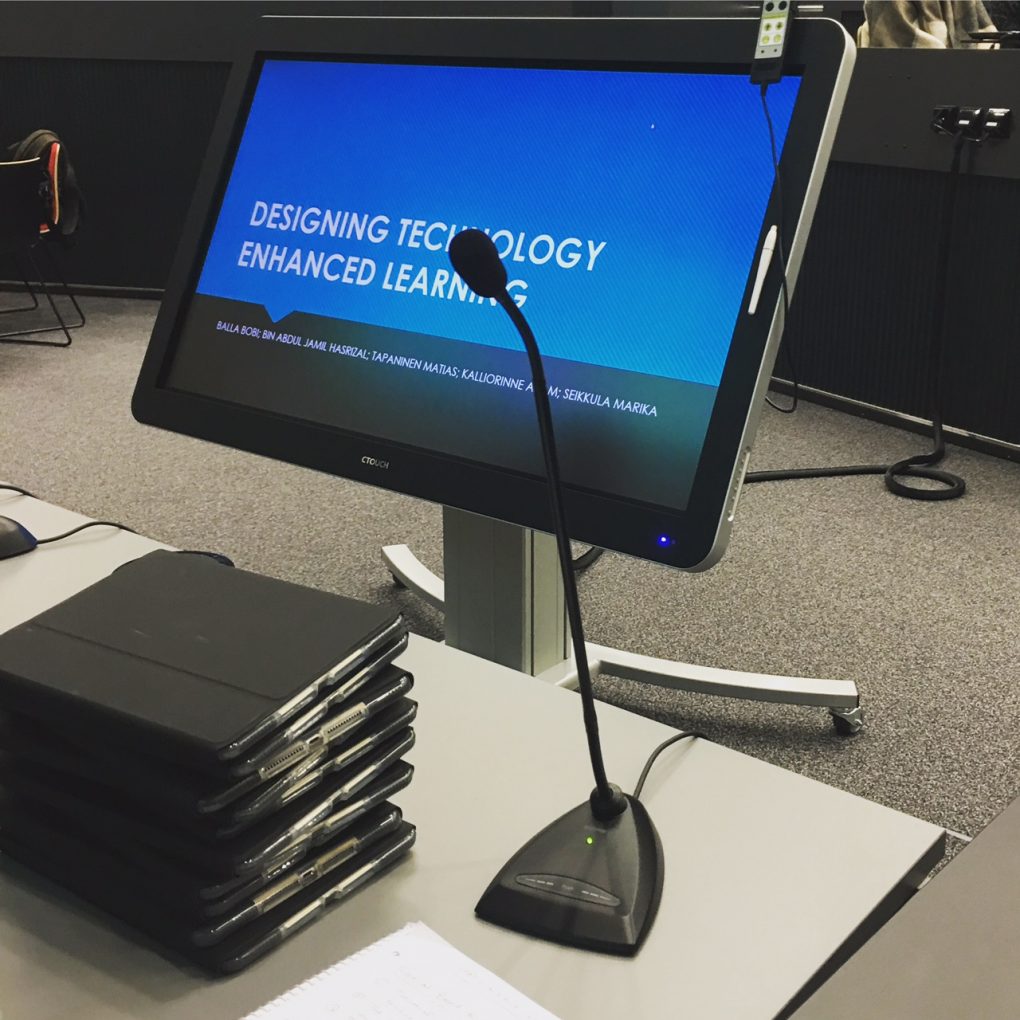
This semester, we are using the Claned as our learning platform, specifically to test the collaborative learning features on it. In ‘Designing Technology-Enhanced Learning (TEL)’ course, articles are shared on Claned, we can read and highlights the text, seen by other collaborators when switched on, commenting and many other features that make reading a journal article more interactive and engaging.
I chose to be part of group 1 to conduct the first flipped classroom session. We’re responsible to handle a session where designing TEL should be discussed for everyone to get a clear overview. We will tackle the details for each component involved in designing TEL in the upcoming sessions.
Personally, I chose to be in the first group for two reasons:
- I think it is more enjoyable to handle a broader topic at the introductory level because we have the freedom to navigate the entire course without having too much restriction in a narrower perspective of discussion.
- It is my new strategy to regulate my study as an adult with ADD. I know that at the end of the semester it will be very overwhelming with so many deadlines. Being too long with a subject has the risk of losing interest making it more difficult for me to complete the task. So it is preferred to make myself busy at this early stage, and I can enjoy reading, participating and contributing with one less pressure towards the end of the course.
Our team have two students from the LET master program and three students doing minor in this course. A blend of two foreign and three Finnish students, is a good setting to offer us a fresh experience in collaboration.
To sum up what we presented, the most highlighted aspect of the presentation is the six steps presented by our lecturer, Dr. Essi Vuopala, who is also a post-doctoral research fellow at LET research team, University of Oulu. The six steps she proposed are very clear to guide an instructor when designing a technology-enhanced learning.
Those six steps are:
- Defining the general framework for TEL
- Writing pedagogical script
- Writing technological script
- Technical implementations
- Testing phase
- Possible further actions
Writing pedagogical and technological scripts are very important and requires some expertise. The process to bring content and technology into an effective design of learning is crucial to make sure both pedagogical needs and technological concerns are well catered.
If we want to write a pedagogical script, it should involve describing learning theory, the pedagogical model, the role of teacher / tutor. Specify the learning materials involved with clear plan on student’s evaluation.
We raise a question for the colleagues to think:
We understand that the usage of technology and student centered learning are two main characters emphasised in the framework of 21st century education. Let say, our school leaders accept the idea, willing to invest some money and therefore each classroom in our school is now equipped with the interactive smart-board.
The smart-board has many functions and as a teacher, you want to make use of it, which the school actively monitors to evaluate. When implementing the lesson, you realise that you as a teacher, were using the smart-board more than the students. You’re standing near the smart-board at the front of the classroom, and gave significant amount of ‘lecture’ which made you as the centre of the learning, away from the idea of student-centered setting.
What went wrong?
Or was that even wrong?
Which one from the pedagogical script and technological script that needs improvement the most?
At the end of the session, we asked our colleagues to design a quick lesson plan benefiting the six steps given by Essi, and talked about the process. Was it easy? What was the major challenges?
[embeddoc url=”https://hasrizal.edublogs.org/files/2017/01/Informed-Design-of-Educational-Technology-for-Teaching-and-Learning-Final-Handover-2lkksic.pdf” download=”all” viewer=”google”]
This lead to an important question, on how the evidence-informed model of good practice as suggest by Linda Price and Adrian Kirkwood in their study, can be made possible in real classroom practice [1. Price, L., & Kirkwood, A. (2014). Informed design of educational technology for teaching and learning? Towards an evidence-informed model of good practice. Technology, Pedagogy and Education, 23(3), 325-347.] ?
It is important to take into account, how investment in providing technological devices involves a huge budget. But in many ways, it is common that all these facilities are left under-utilised for many reasons.
Throughout the history of education, the adoption of instructional programs and practices has been driven more by the ideology, faddism, politics and marketing, than by EVIDENCE (Slavin, 2008)
At the end we have to find our way to achieve what Price and Kirkwood concluded:
“The evidence- informed design of ET interventions needs to be grounded in a better conceptualisation of what constitutes and shapes learning and how interventions can be integrated within the context of their implementation, rather than a focus on technology as the agent of change.
I would like to thank all my colleagues and instructor for the guidance. We are looking forward to participate in the upcoming flipped classroom sessions.

Hasrizal AJ
LET, Oulu
Finland